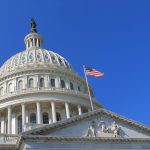Published October 29, 2013
The Obama administration has spent the last several months telling reporters that the benchmark by which to measure Obamacare’s success is 7 million new exchange enrollees. That number comes from the Congressional Budget Office’s most recent baseline estimates of how the law will affect spending and taxes as well as enrollment in public programs and private insurance.
But focusing just on enrollment in the exchanges is misleading, as many millions of individual-market participants are now discovering. They are receiving cancellation notices from their current insurers and are being told that they need to pick their coverage for next year from among the Obamacare-compliant plans offered in and outside of the exchanges. Some of these individuals will make the switch and buy new coverage, assuming the Obama administration is able to make Healthcare.gov minimally functional at some point. But there also will be some current individual-market participants who don’t sign up for an Obamacare plan and go without insurance for some or all of 2014. The interesting number, then, is not gross enrollment in the exchanges, but the net number of newly insured Americans.
The picture is complicated further by the fact that the law encourages the states to vastly expand Medicaid enrollment, covering residents up to 138 percent of the federal poverty line, by offering full federal financing of the expansion for a three-year period (the law originally attempted to compel states to go along with the expansion with full withdrawal of federal funding for non-compliant states, but the Supreme Court struck that down). The Obama administration and the law’s congressional architects are counting on the Medicaid expansion to vastly reduce the ranks of the uninsured.
Of course, these changes, along with Obamacare’s numerous mandates and rules, will also alter coverage in employer plans and the existing individual market. Getting the full picture of what Obamacare will mean for future insurance-enrollment rates therefore requires looking at what will happen in each of the insurance settings.
At the time of enactment, CBO estimated that the net effect of the various Obamacare provisions would be 10 million new enrollees in Medicaid in 2014, 8 million enrollees in plans offered on the exchanges, 4 million new enrollees in plans sponsored by employers, and a reduction of 2 million people in the non-exchange individual insurance market. The net effect was an estimated reduction in the ranks of the uninsured of 19 million in 2014.
The Obama administration relied heavily on this CBO cost estimate to argue that the law would dramatically expand insurance coverage even as it also reduced projected federal budget deficits, in the short and long term. The CBO estimate was also instrumental in rounding up the final votes in favor of passage of the legislation in Congress. A strong case can be made that the numbers in the CBO cost estimate were what was promised to the American people, and therefore represent the benchmark against which Obamacare should be assessed.
The likelihood that such a sizeable reduction in the uninsured can be achieved in 2014 is slim. To date, far more people have learned that they are losing their plans next year than have signed up for new coverage in the exchanges. Moreover, even though Medicaid enrollments are running above those in the exchange plans, they are still not nearly on pace to reach the levels promised at enactment.
Of course, in the original cost estimate, CBO assumed all 50 states would go along with the Medicaid expansion, while, in the wake of the Supreme Court’s decision, it now appears that only about half the states will do so. Further, CBO has altered some other assumptions that affect the coverage estimates.
So perhaps Obamacare’s performance should be compared with the more recent CBO estimate, from which the administration has pulled its target for exchange enrollees. In those projections, CBO expects 9 million new enrollees in Medicaid in 2014, 7 million enrollees in plans offered on the exchanges, and a 2 million reduction in enrollees in individual insurance outside of the exchanges. So the net increase in insurance coverage for 2014 was estimated at 14 million people.
The administration’s recent announcement that the Healthcare.gov website will be functional by the end of November very likely means little to no enrollment over the coming month. From a dead start of very low enrollment as of December 1, the administration would need to have some 14 million new people come under coverage over a four-month period. Skepticism is clearly warranted.
Defenders of the law have cited the large numbers of Americans who’ve enrolled in Medicaid since the exchanges launched on October 1. But those numbers only look large relative to the anemic enrollment in the exchange plans. Of course, there will be many Americans — probably in the millions — who will eventually sign up for Medicaid under the expansion program. After all, it’s essentially free insurance.
But there has always been a sizeable “eligible but not enrolled” Medicaid population, even at existing income-eligibility levels. The effect of the individual mandate might bring more people into Medicaid over the coming year, but that’s an untested proposition. It could just as easily be the case that many millions of Medicaid-eligible families continue to wait to sign up for insurance only when they really need it.
In 2010, we were told that Obamacare would go a long way toward solving the problem of uninsured Americans, even in its first year of implementation. The latest estimates from CBO indicate that the law is supposed to produce a net increase in the insured population of 14 million people in 2014.
That’s a tall order, especially given the millions of Americans who are being pushed out of their existing individual-market plans. At this point, given the disastrous launch of Obamacare, it is not out of the question that the law would increase the uninsured rate rather than decrease it. Reaching the benchmark of 14 million newly insured would take a miraculous turnaround.
James C. Capretta is a senior fellow at the Ethics and Public Policy Center and a visiting fellow at the American Enterprise Institute.










